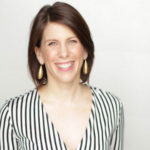When it comes to creating a workplace environment, good design is more than a pretty space that impresses prospective clients. As the famed furniture designer Charles Eames once put it, “Eventually everything connects—people, ideas, objects. The quality of the connections is the key to quality per se.”
At the office, an inspiring ambience translates into motivated, committed, more productive workers, and a happier bottom line, says Diane Stegmeier, president of workplace design firm Stegmeier Consulting Group and author of Innovations in Office Design: The Critical Influence Approach to Effective Work Environments.
“The physical space of a business is so critical to a company’s success—especially a small business that needs to find ways to attract and retain top talent to gain an advantage over their competitors,” Stegmeier says. Effective office design does not necessarily mean hiring an architect and investing in pricey building materials. Consider these key ways that a workplace can elevate a company to its highest potential:
Aim for flexibility. Architecture firm Gensler, in a 2013 survey of 2,000 knowledge workers, learned that employees who can choose when and where they work are more productive and have a better impression of their employer. Design workstations so team members can move them around easily to best accommodate various projects. Offer places throughout the property to fit any need: conference rooms and places for smaller team projects, as well as comfortable space for independent efforts. This could include relaxed places to eat lunch, outdoor tables or a living room-like area with couches—all tethered by wireless technology to encourage spontaneity.
Build around natural habits. To improve on an existing work space, pay attention to where employees naturally gravitate. If conversations tend to linger around the coffee machine, decorate there. Invest in a high table and high stools to place there, and keep a bowl of fresh fruit replenished in the same spot. If team members congregate in a sunny area for lunch, stream Wi-Fi to the area and populate it with comfortable outdoor furniture.
Establish connections. Stegmeier has found that when employees have a direct line of sight to their colleagues and immediate managers, they tend to feel more trusting and engaged. Invest in a centrally located visual display of the team’s projects: This might be as simple as a whiteboard or bulletin board, or a more elaborate “vision wall” where workers can scribble goals or brainstorm ideas. A screen saver on every employee’s computer with the mapping of a project also works.
Build your brand into the environment. Workers are more invested in the company when its ideals are visible. For example, Standard Chartered, a British bank focused on its global footprint, has filled its modern New York offices with both contemporary and traditional art from countries within its worldwide territories. Various meeting rooms are named for nations where the institution has a presence—constant reminders of the firm’s global vision.
Don’t forget light and color. Swiss researchers found that workers exposed to natural light had more energy and were more productive later in the day than those who spent their day in an artificially lighted environment. Bright colors have been proved to affect mood, too. British color psychologist Angela Wright has found that, generally, blue is stimulating, green promotes calm, and yellow provokes creativity—and these reactions are universal (not relative to personal tastes, age or nationality). Stegmeier says you can introduce bold hues without a lot of investment—use found objects, framed art or an accent wall.
Grant Cleveland
Owner and Founder
Company: DuneCraft, a Cleveland-based maker of terrariums and other horticulture-based learning toys
Design: Offices look like the inside of one of the company’s products, with lots of natural light and foliage.
Results: Employee engagement has improved, leading to brand reinforcement and happier workers.
The first couple of years, this business grew out of my home and then an old country house. Then for five years we were in a 36,000-square-foot space in an industrial park in a not-so-nice part of town. It was very inexpensive and pretty nice inside, but only about half of new job applicants would actually show up. The rest just drove by—they were too frightened to get out of their cars. That location separated the scared from the brave.
A few years ago, a 170,000-square-foot space became available in a nicer part of town. It had been vacant for 20 years, so it needed lots of work, but it was also a blank slate. I had been dreaming for a long time about what I wanted our headquarters to look like, but I also needed to realize that dream on a budget. So I got creative.
Today the space is open and bright, filled with 160 potted tropical plants. There are two beautiful koi ponds, which were the most expensive addition at $50,000, but they are surrounded by natural stones rescued from a demolished gristmill. There are other design elements, like unique steel handmade desks I bought directly from the artists for $800—a bargain compared to traditional office furniture. Also, my own personal artwork fills the offices, including a designated gallery.
Now we have offices that make employees feel like they’re in one of the terrariums DuneCraft makes. The design reinforces our brand that way. It is such a unique place that our employees are always inviting their family and friends to see it, and it is an event space for organizations such as the Chamber of Commerce.
But the best thing is that it is beautiful. There are proven productivity and mood benefits to being around vegetation. I don’t suffer the late-winter doldrums I always experienced in previous locations. There are now fewer mistakes, and when errors do happen, there is less screaming. Recently an employee made a huge order error involving 120,000 units, which meant we were severely back-ordered. In the old property, there would’ve been yelling and slamming doors, but an employee stepped up to own his mistake and everyone organically started brainstorming ways to solve it—and they did.
It helps that when things get stressful you can step away from the desk to stare at the trees and visit the fish. Plus, 100 percent of applicants now show up for interviews.
Cheryl Kepner
Senior Vice President of Customer Engagement
Company: Legacy Publishing, a creator of education and training programs for parents, headquartered in Maine
Design: Kepner created a “calm place”—a room where workers can escape to relax in ergonomic chairs and listen to soft music and recorded meditations.
Results: Management now has happier workers, a tool to address employee anxiety and happiness, and an environment in line with the company mission and brand.
Our employees work in an inherently stressful environment. Our salespeople and customer service representatives all day long field emotionally charged calls from parents who are working through our programs to address their children’s behavior problems. At one time we had 100 percent yearly attrition due to this environment. An employee could take as many as 10 calls in a row and we could literally see their resilience break down. The result was a stressed-out workforce and an eroding company.
A couple of years ago we were developing a product with a psychologist who focused on the role of anxiety in families. We realized we needed to address the same issues in our work family. This was really driven home when we polled our workers and 64 percent said the workplace caused some or a lot of stress, and 79 percent told us that the break spaces were insignificant. We couldn’t expect our employees to be their best if they were not functioning at their own personal best. We were asking too much.
One year ago we rolled out our “calm space,” with room for four people. There are ergonomic beanbag chairs, soft lighting and drapes, and each station is outfitted with an independent sound system so that the user can play soft music or one of the selected meditations.
When this calming space opened, the reception was one of gratitude and surprise. It went a long way in showing that the company is sensitive to employees’ mental health.
The rooms are always in use now. Often employees chose to spend 15 or 20 minutes at the end of the day to unwind before driving home or to hit the reset button after a tough call in the middle of the day. Managers use it to give employees a time-out in a really positive way when they’re in the red zone. Having the calm space as an option forces employees to self-assess, and that alone goes a long way in keeping them happy and productive.
The calm space has completely changed the way we manage. Now we don’t allow employees to push through 10 calls. We pull them off and give them a break. The atmosphere is calmer, there is better communication, and everyone is more sensitive to others’ needs—including those of our clients. I wouldn’t want to manage without it.
Aaron Hugo
Executive Vice President
Company: Pinckney Hugo Group, an advertising agency in Syracuse, N.Y.
Design: The office is a bright, colorful, open space intended to encourage seamless workflow and worker flexibility as well as to impress clients.
Results: Growth has been consistent, and employee satisfaction survey grades are high.
Our previous offices were on the outskirts of town and very cramped. We held weekly meetings in the president’s office because we didn’t have a proper conference room, plus there was no real private space for people to work independently.
Twelve years ago we moved into a centrally located century-old warehouse, a 30,000-square-foot space we’ve expanded three times since then, doubling our square footage and employee count. Before the move, we spent a lot of time designing an environment that would relay the excitement and investment in the growth we were anticipating. We created a place that nurtures creativity and collaboration. This includes extra-wide hallways, which make a great place for impromptu meetings. We also have an enclosed courtyard and lounge areas, all connected by Wi-Fi, to give employees work location options, plus space to accommodate big team meetings. The office combines old elements like brick walls and skylights with new materials and vivid colors. It makes a great impression on potential hires and clients visiting from New York City. It shows that we’re invested in the business.
The fully stocked bar has also been a great asset. Employees gather there to connect socially after work hours, and it’s also really useful as a place to invite clients for less formal discussions. We have many more clients spending time here, and there is a much closer sense of community among the employees.
Aside from the fact that our revenue and head count have grown consistently since the move, one quantifiable measurement of the design’s success is the many employee satisfaction awards we’ve won, including being named to the 2013 and 2014 lists of Best Companies to Work for in New York State. In a recent survey, 98 percent of the Pinckney Hugo team scored the work environment positively. That meant a lot to us.










